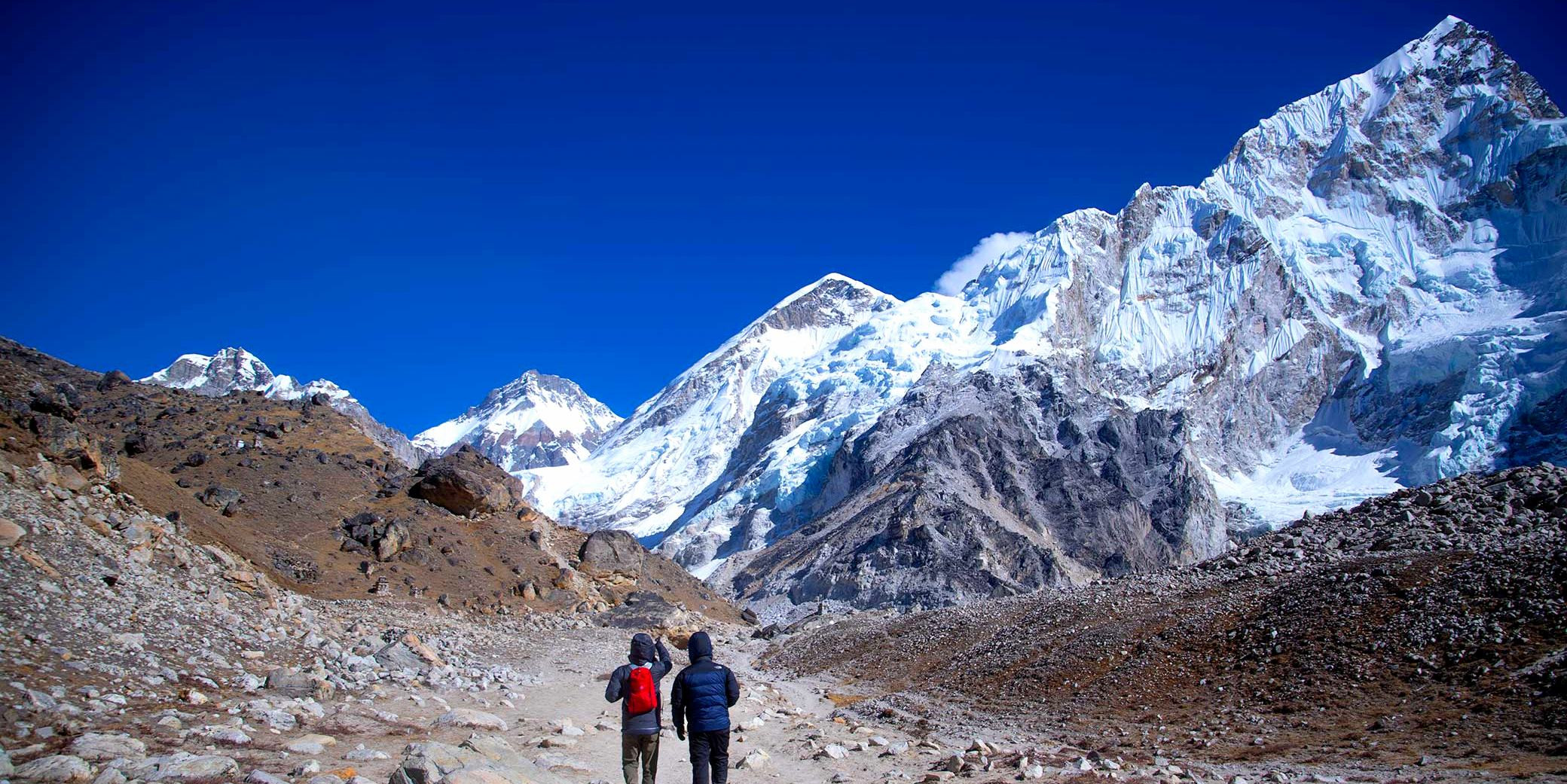Ghorepani Poon Hill Trek
The Ghorepani Poon Hill Trek is one of the most popular and accessible treks in the Annapurna region of Nepal, ideal for those new to trekking or those who have limited time but still wish to experience the magic of the Himalayas. This trek offers a fabulous introduction to the beauty of Nepalese mountains and provides panoramic views of the majestic peaks of the Annapurna range. Here are the key features and highlights of the Ghorepani Poon Hill Trek:
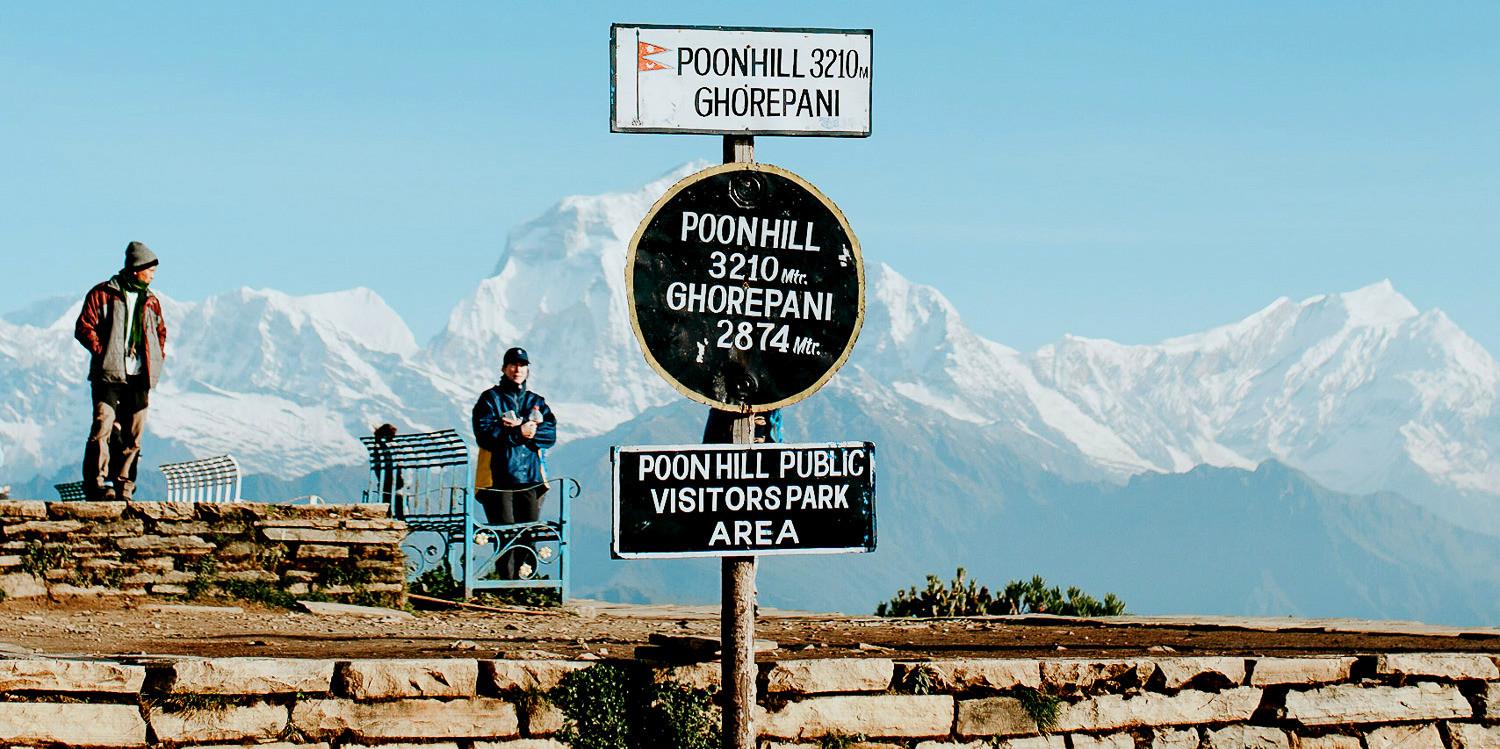
Duration and Route: Typically, the Ghorepani Poon Hill Trek lasts between 4 to 5 days, making it an excellent choice for a short yet memorable hiking experience. The trek starts and ends in Pokhara, a major tourist hub in Nepal known for its scenic beauty and lakeside charm. The usual route takes trekkers from Nayapul to Tikhedhunga, then up to Ghorepani. From Ghorepani, a pre-dawn hike to Poon Hill is the highlight, followed by a trek down through Tadapani and Ghandruk before heading back to Nayapul.
-
Physical Difficulty: This trek is considered easy to moderate, making it suitable for beginners or those not accustomed to high-altitude trekking. The paths are well-maintained, and the ascent to Poon Hill is the most challenging part, involving a series of stone steps that can be quite demanding but are very manageable.
-
Scenic Highlights: The main attraction of the Ghorepani Poon Hill Trek is the breathtaking sunrise from Poon Hill, which at an altitude of 3,210 meters offers a 360-degree view of the Himalayan giants such as Dhaulagiri, Annapurna South, Machhapuchhre (Fishtail), and many more. The trek also passes through beautiful rhododendron forests, which are especially vibrant during the spring when they are in full bloom.
-
Cultural Experience: The trek provides an opportunity to experience the culture of the Gurung and Magar communities. Villages like Ghorepani and Ghandruk showcase the unique architecture, traditions, and hospitality of the local people, offering trekkers a chance to learn about their way of life.
-
Wildlife and Flora: The region is rich in biodiversity. As you walk through the Annapurna Conservation Area, you might spot various species of birds and perhaps some larger wildlife. The forests are a mix of rhododendron, oak, and other tree species, providing a lush, green backdrop to the journey.
-
Accessibility and Best Time to Trek: The trek is accessible throughout the year; however, the best times to go are from March to May during the spring season and from September to November during the autumn season. These periods offer the clearest skies and the most favorable weather conditions.
-
Accommodations: Along the Ghorepani Poon Hill trek, you'll stay in teahouses, which provide basic yet comfortable lodging and good food. This adds to the charm of the trek, allowing trekkers to relax and mingle with other travelers in cozy, communal dining areas.
The Ghorepani Poon Hill Trek is not just a journey through the mountains; it is an enriching experience of natural beauty, cultural heritage, and personal achievement. It's a perfect option for those looking to dip their toes into the world of Himalayan trekking without committing to more strenuous and prolonged high-altitude climbs.
Langtang Valley Trek
The Langtang Valley Trek is an enchanting journey into one of Nepal's most beautiful valleys, offering a superb introduction to trekking in the Himalayas with its moderate difficulty and diverse attractions. Located relatively close to Kathmandu, this trek is ideal for those looking to experience both the natural beauty and unique cultural heritage of the region without venturing too far from the capital. Here are the essential details and highlights of the Langtang Valley Trek:
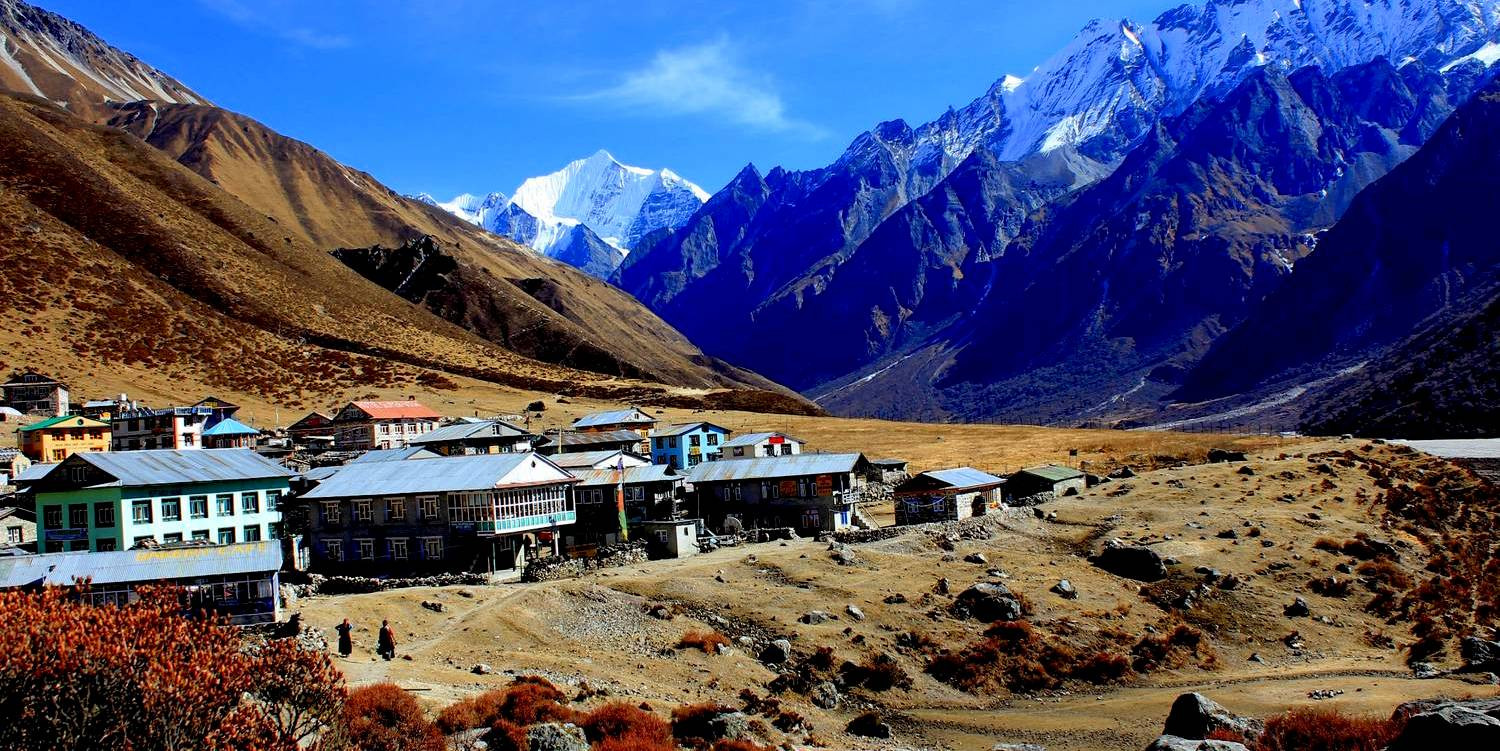
-
Duration and Route: The trek typically lasts between 7 to 9 days, starting from Syabrubesi after a drive from Kathmandu. The trail follows the Langtang River up the valley through forests and rural villages, reaching the alpine meadows and yak pastures around Kyanjin Gompa, the furthest and highest point of the trek. Many trekkers choose to spend a day here to acclimatize and possibly make a day hike to Tserko Ri for excellent views.
-
Physical Difficulty: The Langtang Valley Trek is considered to have a moderate difficulty level. It involves steady climbs but does not reach the extreme altitudes of other Himalayan treks, topping out at around 5,000 meters at Tserko Ri. This makes it a good trek for beginners to moderate trekkers looking to push a bit further.
-
Scenic Highlights: The trek offers dramatic views of Langtang Ri, Langtang Himal, Langsisha Ri, and Ganja La pass. The trail meanders through diverse landscapes, from lush forests rich in wildlife to rugged alpine zones. The area is known for its natural beauty, including cascading waterfalls and serene mountain lakes.
-
Cultural Experience: Langtang is predominantly inhabited by the Tamang people, whose culture is similar to the Tibetan traditions. This trek allows trekkers to visit local monasteries, like Kyanjin Gompa, and experience firsthand the Buddhist culture and hospitality of the Tamang communities. The villages along the way are charming and rich in heritage, offering a glimpse into the daily lives of the locals.
-
Wildlife and Flora: The Langtang region is part of the Langtang National Park, which is home to various species of wildlife, including the red panda, Himalayan tahr, and black bear. The park also boasts a range of floral species, particularly impressive during the spring when the flowers bloom.
-
Accommodations: Teahouses along the Langtang Valley Trek offer comfortable lodgings and meals, providing trekkers with a warm bed and hot food after a day's trek. These small, family-run lodges are known for their hospitality and provide a cozy atmosphere for trekkers to relax and interact.
The Langtang Valley Trek is a beautiful blend of natural beauty, cultural richness, and adventure, suitable for those looking to explore beyond the typical tourist paths without embarking on a physically demanding high-altitude trek. Its accessibility, combined with the richness of the experiences it offers, makes it an excellent choice for a first-time trek in the Himalayas.
Mardi Himal Trek
The Mardi Himal Trek is a relatively newer and less trodden path in the Annapurna region of Nepal, offering an intimate experience of the mountains with spectacular views of the Annapurna, Dhaulagiri, Machhapuchhre (Fishtail), and Manaslu ranges. This trek is an excellent option for those looking for a quiet and short trek in the Himalayas that still offers the dramatic landscapes and close-up mountain views typically associated with longer and more strenuous treks.
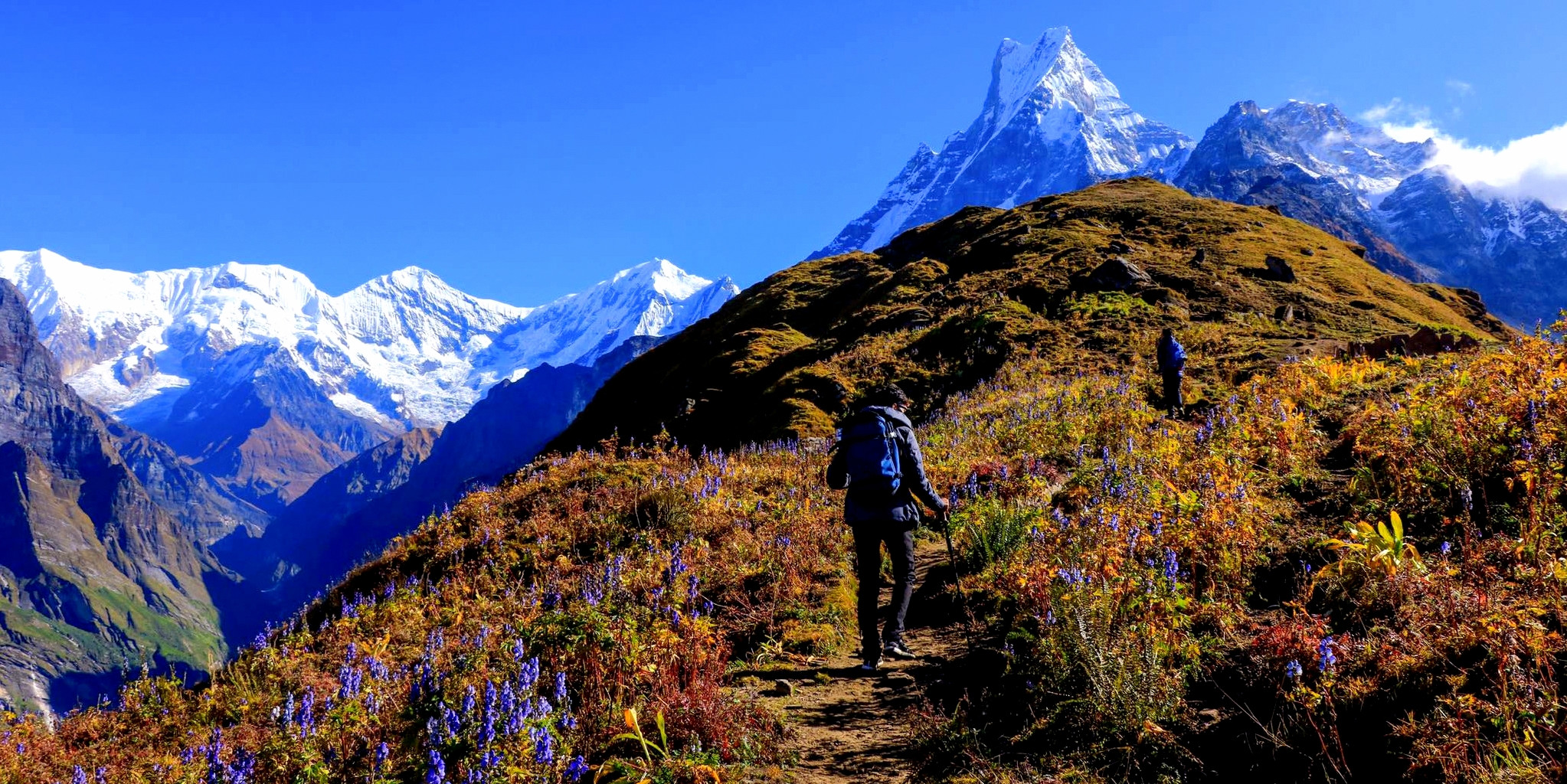
-
Duration and Route: The Mardi Himal Trek typically takes about 4 to 6 days, making it a perfect choice for those with limited time. The trek starts at Kande or Phedi, a short drive from Pokhara. The trail winds through rhododendron forests to the upper viewpoint at Mardi Himal Base Camp, situated at an elevation of around 4,500 meters. The trek then descends back down to the starting point, forming a loop that offers diverse scenery and less repetition of views.
-
Physical Difficulty: Classified as moderate in difficulty, the Mardi Himal Trek involves some steep climbs and rugged paths, particularly as it approaches Mardi Himal Base Camp. The altitude gain is gradual, and the highest point reached is lower than many high-altitude treks, reducing the risk of altitude sickness but still providing a physically rewarding challenge.
-
Scenic Highlights: The trek provides excellent vistas of the majestic Himalayas, including clear views of Mount Machhapuchhre (Fishtail) virtually throughout the trek. The route offers a beautiful mix of landscapes, from lush forests to rocky mountain terrain. The high point of the trek, Mardi Himal Base Camp, offers breathtaking close-up views of the surrounding peaks.
-
Cultural Experience: While the Mardi Himal Trek is more focused on nature, trekkers will still pass through several traditional villages. These provide a glimpse into the rural lifestyle of the ethnic Gurung and Magar communities, known for their warm hospitality and rich cultural traditions.
-
Wildlife and Flora: The trail passes through the Annapurna Conservation Area, which is home to a rich variety of flora and fauna. Trekkers can enjoy the beautiful forests of oak, rhododendron, and other alpine flora, which are particularly vibrant in the spring when the flowers are in bloom..
-
Accommodations: The Mardi Himal Trek has basic teahouses along the route, which have been developed in recent years. These provide essential accommodations and meals, ensuring trekkers have a comfortable place to rest and recharge.
-
Sustainability: As a lesser-known route, the Mardi Himal Trek sees fewer trekkers than other paths in the Annapurna region, helping reduce the environmental impact and preserve the natural beauty of the area. Trekking this path supports sustainable tourism practices by promoting less frequented routes and providing income to local communities.
The Mardi Himal Trek is an excellent adventure for those seeking a serene trekking experience close to nature. Its shorter duration, combined with stunning mountain views and less crowded paths, makes it an appealing choice for those looking to explore the beauty of the Himalayas in a more intimate setting.
Pikey Peak Trek
The Pikey Peak Trek is a hidden gem in the Solu Khumbu region of Nepal, known for its stunning vistas of the Everest and lower Khumbu region. This trek is relatively new on the trekking scene and offers a quieter alternative to the more crowded trails leading to Everest Base Camp. It’s a great option for those who wish to enjoy breathtaking views of Mount Everest and surrounding peaks without the strenuous efforts required by higher altitude treks.
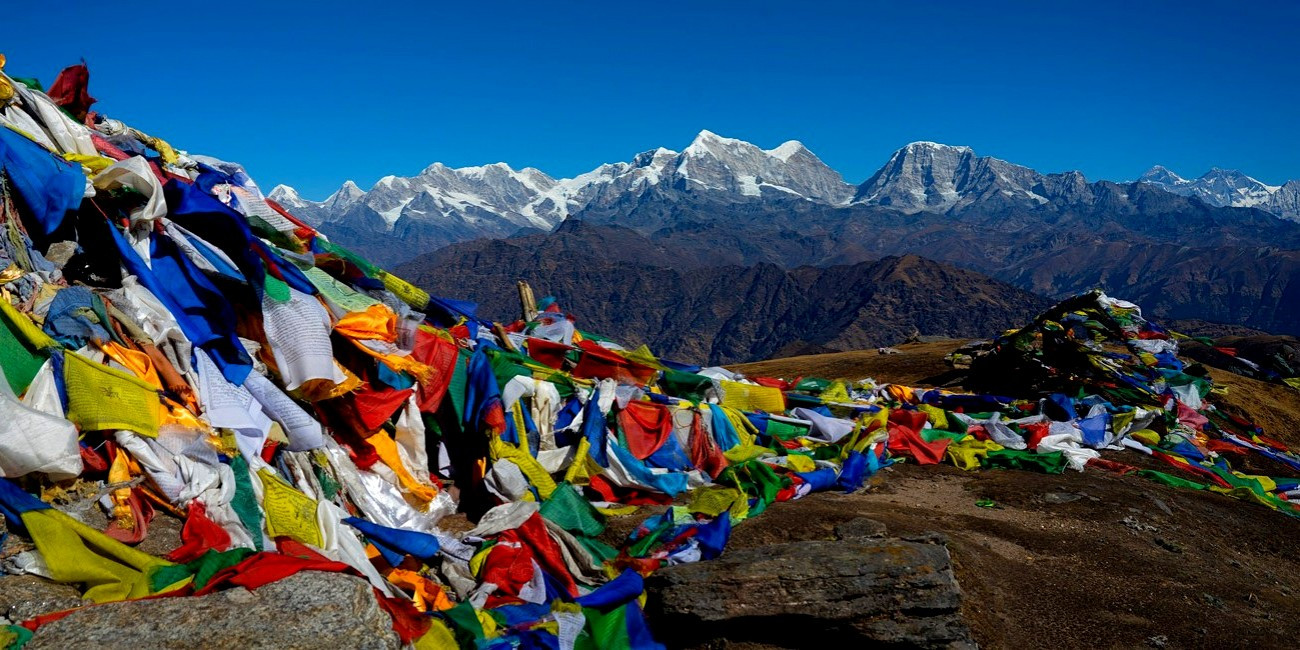
-
Duration and Route: Typically, the Pikey Peak Trek lasts about 5-7 days. The journey begins with a drive from Kathmandu to Dhap or Shivalaya, from where the actual trekking begins. The trail passes through beautiful Sherpa villages, rhododendron forests, and high pastures until reaching the summit of Pikey Peak. From the peak, trekkers are rewarded with one of the best panoramas of the Himalayan range, including Everest, Makalu, and Annapurna. The trek can conclude in Phaplu, from where a flight or drive back to Kathmandu can be arranged.
-
Physical Difficulty: The Pikey Peak Trek is considered moderate in difficulty. It involves some steep sections but is overall less demanding in terms of altitude and length, making it accessible to beginners and those looking for a shorter trek in the Everest region.
-
Scenic Highlights: The highlight of the Pikey Peak Trek is undoubtedly the spectacular sunrise view from Pikey Peak itself, which at 4,065 meters offers sweeping views of the Himalayas. The trek route also offers lush landscapes, including densely forested trails and vibrant rhododendron blooms in the spring.
-
Cultural Experience: This trek provides a rich cultural experience as it passes through various Sherpa and Tamang villages. Trekkers can observe and engage with unique local traditions and may visit ancient Buddhist monasteries along the way, including those at Junbesi and Thubtenchoeling. These interactions offer insight into the spiritual and everyday lives of the Himalayan people.
-
Wildlife and Flora: The route traverses through diverse ecological zones home to various species of flora and fauna. Trekkers can witness a variety of birds and perhaps glimpse wildlife such as deer and monkeys. The forests are a mix of pine and rhododendron, providing a beautiful natural setting throughout the trek.
-
Accommodations: Accommodation options along the Pikey Peak Trek include basic teahouses and lodges. These facilities provide essential services, ensuring a comfortable stay, though they are simpler and less developed compared to those on the more popular Everest trek routes.
-
Sustainability: Opting for the Pikey Peak Trek supports sustainable tourism practices by contributing to the local economy of less frequented areas. This helps in promoting equitable economic growth and the development of infrastructure in remote regions.
The Pikey Peak Trek is an excellent choice for those looking for a short, culturally rich, and scenic trek that provides a less crowded alternative to the more popular routes in the Everest region. Its combination of natural beauty, cultural depth, and accessibility makes it a must-try for both seasoned trekkers and those new to Himalayan adventures.
Khopra Danda
The Khopra Danda Trek, also known as the Khopra Ridge Trek, is one of the more off-the-beaten-path treks in the Annapurna region of Nepal. This trek offers a fantastic blend of high mountain landscapes and rural cultural experiences. It’s a superb alternative for those who wish to explore unique trails with fewer tourists while still experiencing the dramatic panoramas characteristic of the Annapurna range.
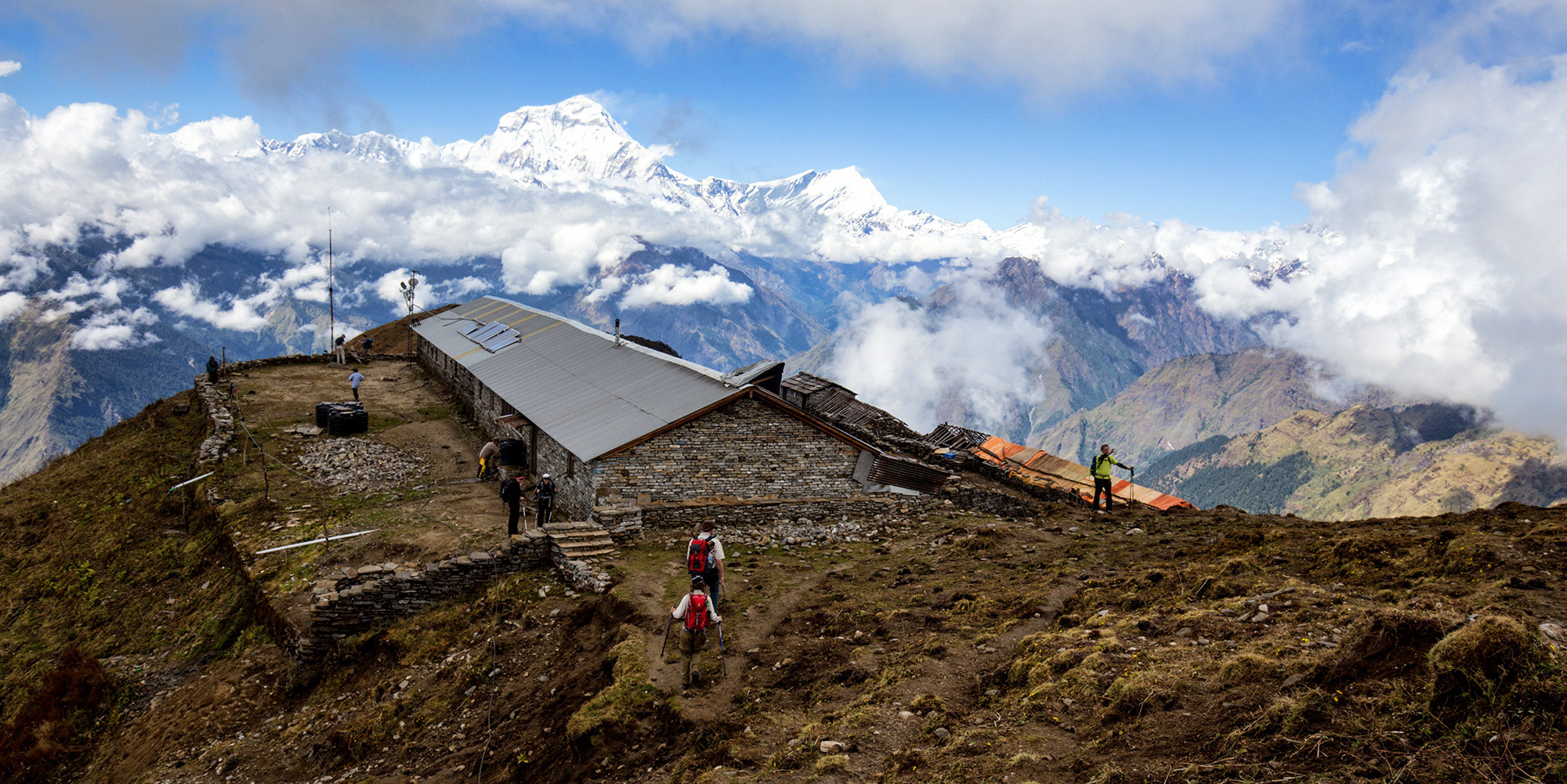
-
Duration and Route: The Khopra Danda Trek typically lasts between 7 to 10 days, depending on the chosen route and whether side trips, like a visit to the sacred Khayer Lake, are included. The trek usually starts and ends in Pokhara, taking a route that diverges from the more crowded Ghorepani Poon Hill trail to lead into the quieter, more remote regions of the Annapurna Conservation Area. The journey involves trekking to Khopra Ridge, which offers spectacular views of the Annapurna South, Dhaulagiri, and Nilgiri, among other peaks.
-
Physical Difficulty: The trek is considered moderate in difficulty. It involves some long days of walking on steep trails, but it is more accessible than some of the higher-altitude treks in Nepal. The highest point of the trek, Khopra Danda, stands at about 3,660 meters (12,007 feet), which provides a less intense but equally rewarding high-altitude experience.
-
Scenic Highlights: From Khopra Ridge, trekkers enjoy sweeping vistas of Dhaulagiri, Annapurna South, Fang, and Nilgiri. The trek also passes through diverse ecological zones, from lush subtropical valleys to stunning alpine plateaus. Additionally, the side trip to Khayer Lake is highly recommended for its spiritual significance and the dramatic scenery around it.
-
Cultural Experience: The Khopra Danda Trek passes through various Gurung and Magar villages, offering trekkers a glimpse into the rural lifestyles and cultures of these ethnic groups. The community-managed lodges on the route contribute directly to local welfare, and interacting with the friendly locals can be a highlight of the trek.
-
Wildlife and Flora: Trekking through the Annapurna Conservation Area provides opportunities to witness a variety of flora and fauna. The region is known for its rhododendron forests, which bloom spectacularly in the spring, and the diverse wildlife includes species such as the Himalayan tahr and the colorful Danphe (the national bird of Nepal).
-
Accommodations: The trek offers a mix of community lodges and teahouses that are fewer in number and simpler than those found on more popular treks. These accommodations provide basic amenities, contributing to a more authentic and intimate trekking experience.
-
Sustainability: The Khopra Danda Trek supports sustainable tourism practices through its use of community lodges, which reinvest profits back into the local area. This helps in improving local infrastructure, education, and healthcare.
The Khopra Danda Trek is ideal for those looking to experience the natural beauty and cultural richness of the Annapurna region without the crowds found on more classic treks. Its blend of remote mountain paths, cultural encounters, and stunning alpine scenery makes it an enriching choice for any trekker seeking a unique Himalayan adventure.
Tips for Beginners Treks in Nepal
Trekking in the Himalayas, even on trails suited for beginners, is an exciting adventure that requires careful planning and preparation. Here are some essential tips to help beginners enjoy a safe and memorable trekking experience in Nepal:
Choose the Right Trek: Select a trek that matches your fitness level and hiking experience. For beginners, treks like Ghorepani Poon Hill, Langtang Valley, and Mardi Himal are excellent choices due to their moderate difficulty and shorter duration. Research the trek's difficulty, altitude, and typical itinerary to ensure it aligns with your capabilities.
-
Physical Preparation: Start preparing physically several weeks before your trip. Engage in regular cardiovascular exercises such as walking, jogging, cycling, or swimming. Additionally, include some strength training and hikes in your local area to get accustomed to prolonged walking, preferably on varied terrains and inclines.
-
Acclimatize Properly: Altitude sickness can affect anyone, regardless of fitness level. Choose a trekking route that allows for gradual acclimatization, and take it slow to give your body time to adjust to higher altitudes. Stay hydrated and inform your guide immediately if you start feeling symptoms of altitude sickness.
-
Hire a Guide: Especially for beginners, having a local guide can enhance the trekking experience. Guides not only help with navigation but also provide insights into the local culture, flora, and fauna. They are invaluable in managing logistics and ensuring your safety throughout the trek.
-
Choose the Right Season: The best times for trekking in Nepal are during the pre-monsoon spring (March to May) and post-monsoon autumn (September to November). These seasons offer the clearest skies and the most stable weather. Avoid monsoon season, when trails can be slippery and views obstructed by clouds.
-
Travel Insurance: Obtain travel insurance that covers high-altitude trekking. Check that it includes coverage for medical evacuation and trip cancellation, as these can be crucial in remote mountainous areas.
-
Respect Local Customs: Nepal is rich in cultural traditions. Show respect to local customs, religious practices, and community rules. Dress modestly, ask permission before taking photos of people, and be environmentally conscious by minimizing waste and not disturbing wildlife.
-
Stay Hydrated and Eat Well: Maintain a high level of hydration as you trek, and eat nutritious meals to sustain your energy levels. Teahouses along the trekking routes offer a variety of foods, and it’s important to consume a balanced diet to match the physical demands of trekking.
-
Enjoy the Journey: While the objective might be reaching a certain viewpoint or destination, remember to enjoy the journey itself. Take time to appreciate the landscapes, engage with local villagers, and take plenty of photos. The cultural interactions and natural beauty are what make trekking in Nepal a truly enriching experience.
By following these tips, beginners can ensure a rewarding and enjoyable trekking experience in Nepal, making the most of their adventure in the Himalayas.
Ideal Time for Beginners Treks in Nepal
Choosing the ideal time to embark on a trek in Nepal is crucial, especially for beginners, as it can significantly influence the overall experience and enjoyment of the hike. The best times for beginner treks in Nepal are typically during the country's two main trekking seasons: pre-monsoon (spring) and post-monsoon (autumn). Here’s why these periods are considered ideal:
Spring (March to May) Spring is one of the most favored seasons for trekking in Nepal. During this time, the weather is generally stable with mild temperatures, making it comfortable for hiking. Key advantages of trekking in the spring include:
-
Blooming Flora: The trails, especially at lower altitudes, are adorned with blooming wildflowers, including the spectacular rhododendrons, Nepal's national flower. This adds a stunning visual appeal to the trek.
-
Clear Skies: As the spring progresses, the days generally become clearer, offering excellent visibility, which is ideal for enjoying panoramic mountain views.
-
Warmer Weather: The temperatures are comfortably warm during the day, although nights can still be chilly, especially at higher altitudes.
Autumn (September to November) Autumn is perhaps the most popular trekking season in Nepal, characterized by the best overall trekking conditions:
-
Clear and Stable Weather: Post-monsoon, the skies clear up, and the views of the Himalayan peaks are exceptionally clear. There is less likelihood of precipitation, and the weather tends to be very stable.
-
Optimal Temperatures: Temperatures during this time are moderate—cool enough for comfortable trekking but not yet cold as in the winter months. Nights can be cold at higher elevations but are generally manageable.
-
Cultural Festivities: Autumn coincides with several major Nepalese festivals, such as Dashain and Tihar, providing trekkers with a unique opportunity to experience Nepal’s rich cultural heritage.
Considerations for Other Seasons
-
Winter (December to February): Winter can also be a good time for certain treks, especially in the lower Himalayan regions. The skies are clear, and trails are less crowded. However, temperatures can be very cold, especially at night, and snow may block higher passes.
-
Monsoon (June to August): Trekking during the monsoon is generally discouraged for beginners due to slippery trails, leeches, and obscured mountain views. However, some regions like the Upper Mustang and parts of the Dolpo, which lie in the rain shadow, remain viable options.
Choosing the right season for your trek enhances the experience by providing better weather, clearer views, and more comfortable trekking conditions. For beginners, opting for the peak seasons of spring and autumn is generally recommended to maximize the enjoyment and safety of their Himalayan adventure.
Starting a novice trek in Nepal lets you see the stunning scenery of the Himalayas as well as feel the local customs' warmth. These trails offer magnificent views, reasonable difficulties, and an opportunity to closely interact with the history of the country, therefore perfect for those starting trekking. Ideal hiking conditions—cool weather and unobstructed views—are usually found in the spring and fall. Beginners can safely negotiate these magnificent landscapes thanks to knowledgeable guides and local hospitality, thereby turning every trek in Nepal not just a journey through nature, but a path to personal exploration and connection.
FAQs for Beginner Treks in Nepal
Q: What is the best time of year to go on a beginner trek in Nepal?
A: The optimal periods for beginner treks in Nepal are during the spring (March to May) and autumn (September to November). These seasons offer stable weather, clear skies, and comfortable temperatures, which are ideal for trekking.
Q: Do I need any special permits for trekking in Nepal?
A: Yes, most treks require a TIMS (Trekkers' Information Management System) card and a conservation area or national park permit. These can typically be arranged through your trekking company.
Q: What should I pack for a beginner trek in Nepal?
A: Essential items include sturdy trekking boots, a waterproof jacket, layered warm clothing, a sleeping bag suitable for cold temperatures, a sun hat, sunglasses, sunscreen, a water purification system, and a first-aid kit.
Q: How fit do I need to be to undertake a beginner trek in Nepal?
A: Beginner treks are generally manageable for most people in good health and reasonable fitness. However, being fit will enhance your comfort and enjoyment of the trek, as even beginner treks can involve several hours of walking each day.
Q: Can I hire a guide or porter for my trek?
A: Yes, and it is highly recommended for beginners. Hiring a guide and possibly a porter can greatly enhance your trekking experience by providing local knowledge, language skills, and logistical support. Guides ensure safety and help with trail navigation, while porters can carry your gear.
Q: What are the accommodations like on beginner treks in Nepal?
A: Accommodations typically include tea houses or lodges, which offer basic but comfortable rooms, often with shared bathroom facilities. Most provide meals and a place to socialize with other trekkers.
Q: Are beginner treks in Nepal suitable for children?
A: Many beginner treks are suitable for children, making them excellent for family adventures. Popular family-friendly treks include the Ghorepani Poon Hill and the Pikey Peak. Consider the distance and daily walking times when trekking with children.
Q: What safety measures should I take?
A: Ensure you have travel insurance that covers high altitude trekking. Always trek with a guide, stay hydrated, acclimatize properly, and follow the trekking regulations and your guide’s advice. Be prepared for sudden weather changes by packing appropriate gear.
For the Nepal tour, please click here.
If you are looking for different kinds of Nepal Tours or Trekking Packages, feel free to contact us.
